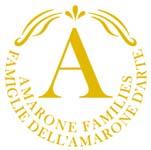 Ten of the prestigious labels of wine from Valpolicella Amarone, had teamed up over a year ago to form an association called ‘Le Famiglie dell’Amarone d’Arte’ or the‘Amarone Families’. Allegrini , Brigaldara , Masi , Musella , Nicolis , Speri , Tedeschi, Tenuta Sant'Antonio , Tommasi , Zenato were joined later by Begali and Venturini making it the distinguished dozen. Ten of the prestigious labels of wine from Valpolicella Amarone, had teamed up over a year ago to form an association called ‘Le Famiglie dell’Amarone d’Arte’ or the‘Amarone Families’. Allegrini , Brigaldara , Masi , Musella , Nicolis , Speri , Tedeschi, Tenuta Sant'Antonio , Tommasi , Zenato were joined later by Begali and Venturini making it the distinguished dozen.
Amarone used to be something that very few people made and was made in small amounts, according to Sandro Boscaini, President of the Amarone group and also the owner of Masi wine company. Explaining during the visit to New York on October 6-7, he said, "Now almost half the grapes grown in the Valpolicella region are being used to produce Amarone."
Amarone quality has been under attack for some time now and last year, when the Association had been newly formed with 10 producers, Masi had made similar pronouncements in London. The event was reported in delWine and can be viewed at : http://www.indianwineacademy.com/item_2_337.aspx
Valpolicella producers are to blame for the unsatiated greed for higher quantities at the cost of quality. The appellation rules allow up to 70% grapes to be used in Amarone. Against an estimated demand of 9 million bottles, the production touched 15 million bottles in 2008 without a corresponding increase in demand, thus resulting in a decrease in prices and increase in inventory.
The Consorzio reduced the upper limit to a maximum of 50%. This did help bringing down the production to 12 m bottles last year. With an increasing pressure on the prices and reduction of demand at higher prices, only 9 million certification stickers needed to be issued last year by the Consorzio. According to the ‘Families’ this number is perhaps still too high.
Whereas the other noble wines of Italy-Barolo, Barbaresco and Brunello are known to have been made over a century ago and Recioto has been the classic wine of the region, Amarone was conceived by accident in 1938. The Family believes it has been around since the Roma times, but concedes that the current avatar was recent and actually accidental.
The three grapes used for making most of red wines of Valpolicella are Corvina and its family grape Corvinone, Rondinella and Molinara though other indigenous grapes like Oseleta are also used in small quantities and recently a small proportion of international varieties has also been allowed.
Amarone is made from the same grapes but by air-drying grapes for about 4 months and then slow fermenting in the tank the grapes which have about 40% reduced moisture, resulting in heavy concentration of sugar. Amarone is thus layered with complexity, elegance, finesse and naturally higher alcohol-16.5% is not uncommon though 17% is also seen occasionally. The labour-intensive process adds to the cost of wine. The risk of a wet and humid condition during the drying period can also cause the grapes to rot.
Boscaini argued at these tastings that using less than the best grapes, machine-harvesting, heated buildings, and even oak chips instead of oak barrels can result in an inferior wine.
"We formed this group to protect the quality," he said.
The Distinguished Dozen have agreed to limit their total annual production to 2 million bottles and not produce it at all during poor harvests. They will also put a hologram on their bottles with the letter A to indicate the authenticity of Amarone.
The idea of banding together to market as a brand is not new. ‘Australia's First Families of Wine’ was formed in Australia last year with the same objective. PFV (mostly European members) and Istituto Grandi Marchi (of which Masi is one of the 17 members and Marchese Piero Antinori the current president) of Italy have been around for years and the member-producers have even visited India together on many occasions during the last decade, their visits duly reported by delWine
The ‘Five Families’ of New York as we know them may be infamous but this Amarone Family of Twelve from Valpolicella near Verona certainly hope to keep the world- renowned area and the Amarone wine as iconic. One hopes to see them in action in India soon too. Many 5-star hotels would welcome them with open arms and wallets.
For related articles and visit to the wineries last year and Amarone Tastings, click:
http://www.indianwineacademy.com/item_6_362.aspx
http://www.indianwineacademy.com/item_4_363.aspx
Subhash Arora
|